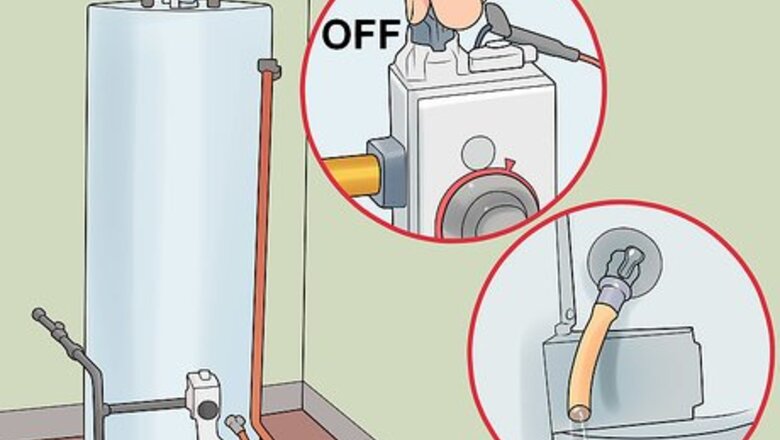
views
Installing a Gas Water Heater
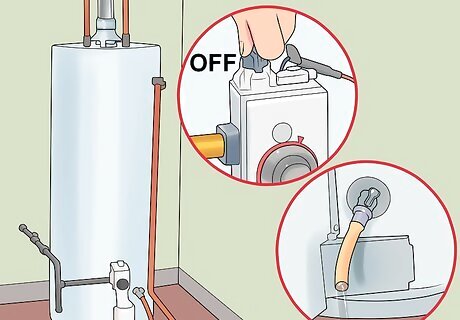
Remove the old water heater by turning off all valves and draining the water. If you're replacing an old hot water heater, you must cut the pipes away, turn off every valve, and drain it of water. To remove an old heater, do the following: Turn off the cold water valve at the top of the heater. Switch off the gas valve and turn off the electric supply to the heater at the circuit breaker — watch the pilot light go out to ensure no more gas remains. Attach a hose to the drainage pipe and let the water flow into a drain. Unscrew and disconnect the vent shaft at the top of the heater. Remove any remaining unions with a pipe wrench or tubing cutter. Place the heater on a lifting trolley or forklift, place it in your truck, and bring it to the proper disposal facility. Consider hiring a removal service if you lack the ability to carry it yourself.
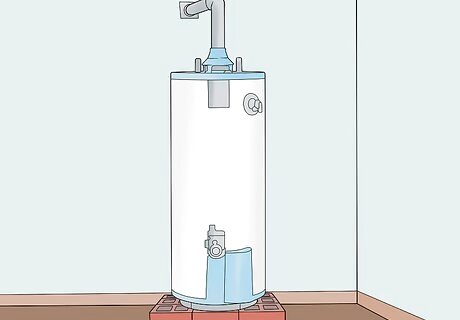
Place the new heater on top of blocks and align it with the pipes. Lift the heater onto cinder blocks or concrete blocks with a lifting trolley or a forklift — use blocks that are the same size placed directly next to each other to minimize the risk of the heater falling. Align it as best as you can with the water and gas pipes, as you can rotate the heater later on if it isn't quite perfect. It's essential that the water heater does not make contact with the ground, even while you are setting it up, as it could alter the integrity of the heater's exterior, damage low pipes, and make the heater less effective overall.
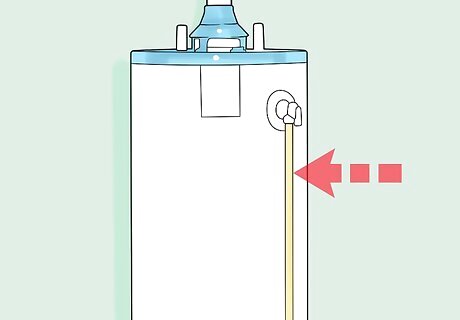
Attach a new temperature and pressure relief valve. Grab the temperature and pressure relief valve, which looks like a faucet with a valve on top with a small hose-like pipe coming out of the bottom. Screw it into the temperature and pressure relief hole, which looks like a large circle with an input slot, and apply teflon tape if necessary to prevent leaking. Use a pipe wrench to get the temperature and pressure relief valve fully tightened. Opt for a copper version of the relief valve to keep the lines clean, as copper has antibacterial properties.
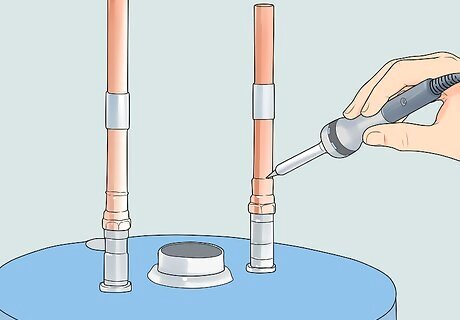
Solder new copper adapters to the water intake on top of the heater. Using 6 in (15 cm) copper pipes, solder a new adapter to one open end of a pipe to make it fit correctly into the water intake on top of the heater. Use a pipe wrench to secure the connection. The hot water output should have a red ring around it, while the cold water intake should have a blue ring. If your area has particularly hard water or if your city requires it, attach a plastic lining "nipple" to the top of the intake valve to further regulate the water quality.
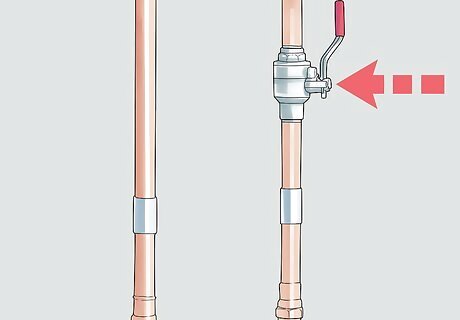
Attach the water lines to the top of the heater. Align the copper pipes extending from the intake valve on top of your new heater with the water pipes coming from the ceiling or wall. Then, solder the pipes together with copper couplings. If they don't line up, solder elbow joints to the water heater's copper pipes to get them to connect seamlessly.
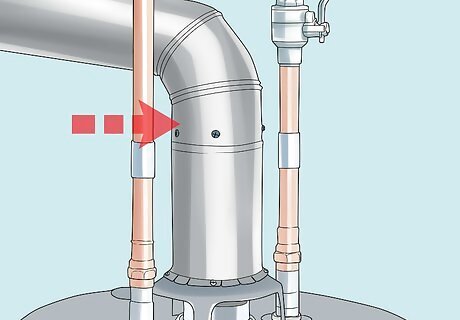
Reattach the vent shaft over the draft hood on top of the heater. Shove the draft hood tightly over the vent and secure it to the heater with ⁄4 in (1.9 cm) screws. The vent should be at least 1 foot (0.30 m) high before it bends, so re-adjust the vent as needed. It is best to pre-drill the holes into the draft hood so you can align the vent shaft with the draft hood easily.
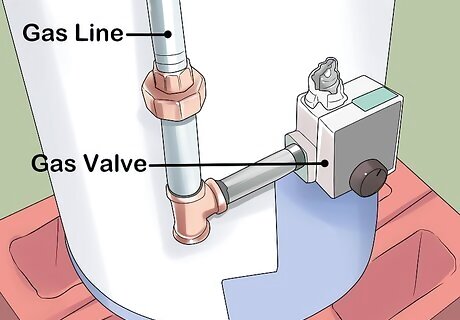
Reconnect the gas line to the gas valve. Coat the ends of a steel pipe with pipe joint compound and screw one side into the gas valve. Then, align it to the tank and connect it to the gas supply. Use two wrenches to reduce the stress on the gas valve, keeping one on the valve itself to steady it and one to do the turning. Use plastic coverings to secure the union of the gas valve and the gas intake.
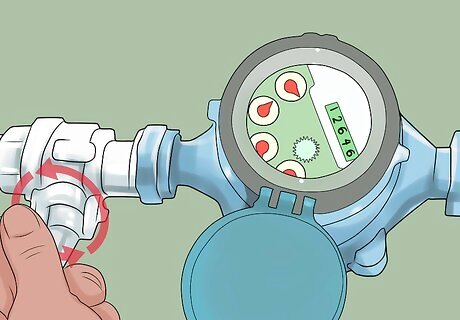
Fill the new tank with water and test it for leaks by turning on a faucet. Turn on the water at the main shutoff and leave the cold water valve open. Turn on a faucet in a nearby room to hot and listen for the heater to turn on. Then, look at every joint on the heater to make sure there are no leakages. If you smell gas, turn off the gas valve and the faucet, wait a few hours, then solder the connection. If you don't wait, you could spark the gas in the air. Water leaks and gas leaks can be fixed by tightening the connections or soldering the pipes. Turn off the valves and tighten or solder the loose connection, then try again. Turning on hot water throughout the home activates the heater, even if the pilot light is not on, so you are able to check the pipes for leaks much more easily.
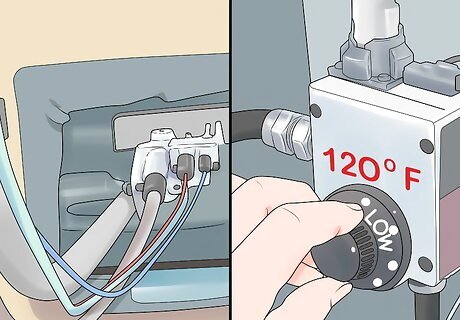
Light the pilot light per the heater's instructions and set it to 120 °F (49 °C). After you have checked for leaks and made sure your connections are secure, light the pilot light of the heater and set the heater's temperature to 120 °F (49 °C) according to the manufacturer's instructions. Every heater has a different process, so follow the manufacturer's guide to finding the location and method of lighting the pilot light. The pilot light will generally be at the bottom of the heater behind a removable panel, but again, check the instructions that came with your heater to safely get it started.
Setting up an Electric Water Heater
Remove the old electric heater after turning off the electricity and draining the water. If you have an old heater that is being replaced, you must cut the pipes away, turn off every valve, switch off the electricity, and drain it of water. To remove the old heater, do the following:Cite error: Closing missing for tag
Keep the drain valve in the front as best as you can to easily drain out water later on in the water heater's life.
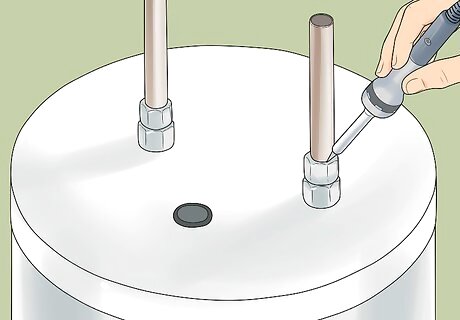
Solder copper pipes to the cold water intake. Cut 6 in (15 cm) copper pipes with a tubing cutter, then check to see if the end fits over the water intake valves on top of the heater. Attach an adapter if the pipe doesn't fit over the intake valves. Heat the copper pipes with a torch, then solder it together — the solder should activate quickly if the pipe is heated beforehand. You can find copper tubing, tubing cutters, pipe adapters, and a soldering iron at your local hardware store. Clean the pipes beforehand with steel wool if you want to reduce the amount of buildup in the water heater, but it is not required as there is only a little bit of deposit that could get into the heater from copper tubing.
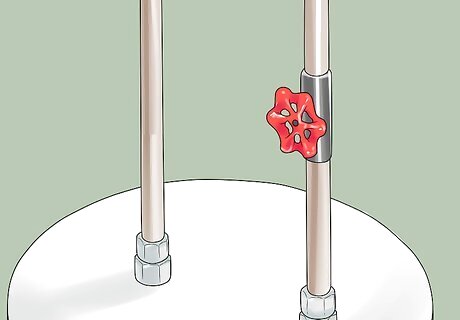
Align the water intake pipes with the water pipes coming from the ceiling. Align the copper pipes you just soldered onto the top of the heater to the water pipes coming from the ceiling or wall. Solder these pipes together, using elbow joints if necessary, to prevent leakages and create a connection. If they don't line up, elbow joints are necessary to get the pipes to connect correctly.
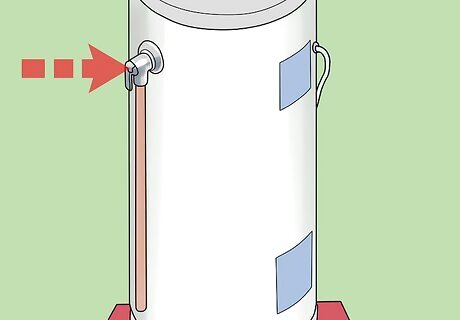
Attach a new temperature and pressure relief valve to the heater. Buy a temperature and pressure relief valve that is rated the same as your heater — check the American National Standard Institute to make sure the numbers are the same. Cut a length of copper tube that reaches down from the relief valve no more than 3–4 in (7.6–10.2 cm) above the ground. Use a pipe wrench to secure the new valve, and then solder the copper tube onto the valve's opening. There should be a large circular opening near the bottom of the heater to attach the new temperature and pressure relief valve to. If you don't see one, consult the manufacturer's guide. Use teflon tape on the connecting portion of the valve if it doesn't quite fit into the heater. Make sure the opening is pointing towards the ground.
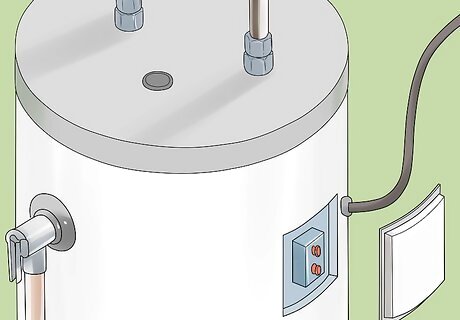
Remove the cover of the heater and connect the electric wires to your grid. Attach the grounding wire to the green grounding screw on the top of the heater. Then, follow the instructions that came with your heater very closely to figure out the correct configuration for the rest of the wires. Different electric heaters have very different wire configurations and colorations, so to prevent damage to your heater's circuitry and to prevent electrocuting yourself, consider calling an electrician or electrical inspector to check your work or connect the wires for you. If the heater's wires don't reach the wires that connect to your home grid, then mount a metal electrical box on a nearby wall and run the old wires and heater wires to the box using an armored cable.
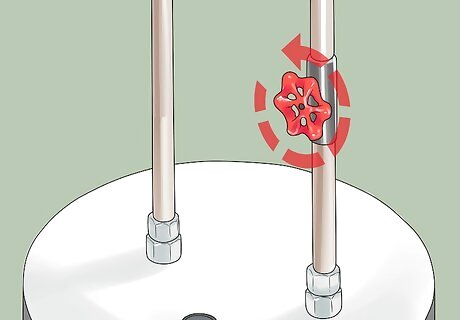
Fill the heater with water and check for leaks before turning on the electricity. Fill the heater with water by turning the water valve on, then turn on a tap somewhere in the home and check every connecting pipe for leaks. If there are leaks, empty the water heater through the drain valve with a garden hose, then solder the offending leaky areas again. Be sure to close the drain valve before you fill it with water. Don't turn on the electricity until you are sure there are absolutely no leaks in the heater, or you could destroy the electrical components and have to replace them.
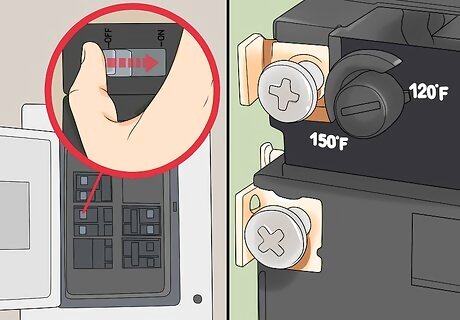
Turn on the electric connection and set it to 120 °F (49 °C). Turn on the electricity at the main panel, and set the temperature to no more than 120 °F (49 °C). Different electric heaters have the temperature control in different places, so consult your user guide that came with the heater to find out exactly where this panel is on your device. Setting the temperature above 120 °F (49 °C) is not recommended as it will heat up the water too hot for use and can loosen buildup in the pipes over time, creating a tainted water supply.


















Comments
0 comment